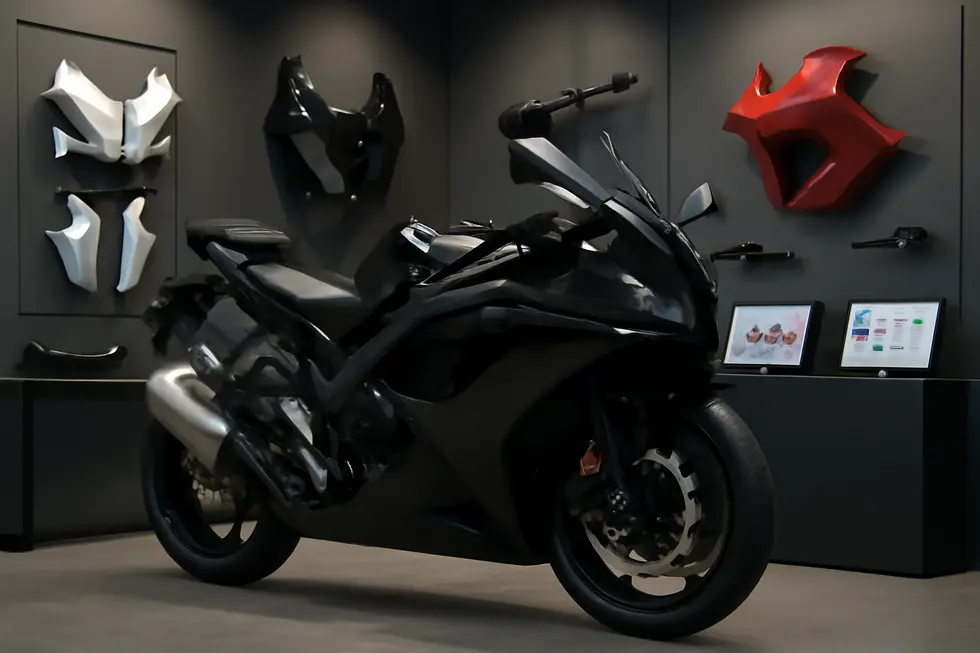Mastering Motorcycle Fairing Insulation: Protecting Performance and Longevity
October 8, 2025 | by summitfairings
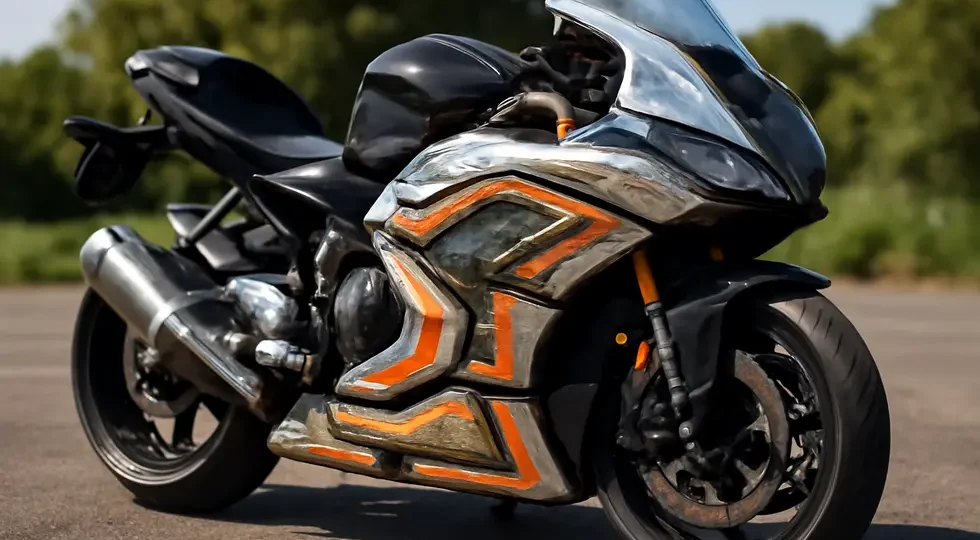
Introduction
Motorcycle fairings serve a crucial role in both the aesthetics and performance of a bike, but they face constant threats from heat, moisture, and mechanical vibrations. Proper insulation of these components directly protects their structural integrity and appearance, essential considerations for any business investing in quality motorcycle parts. Effective insulation preserves fairings, reducing replacement costs and boosting customer satisfaction. This article dives deeply into the key aspects of motorcycle fairing insulation. First, it examines thermal protection using specialized heat shields and materials engineered to withstand engine and exhaust heat. Next, it explores the advanced materials and technologies that optimize insulation performance. Finally, it covers moisture and vibration protection strategies centered around innovative adhesive solutions that maintain durability in all conditions. Together, these insights provide business owners with a comprehensive understanding of how to safeguard fairings and extend their lifecycle.
Tables of Contents
Chapter 1: Thermal Protection in Motorcycle Fairing Insulation Using Heat Shields and High-Temperature Resistant Materials
- The Critical Role of Heat Shields in Safeguarding Motorcycle Fairings from Excessive Heat
- Engineering Motorcycle Fairings with Advanced High-Temperature Materials for Superior Thermal Defense
Chapter 2: Materials and Technologies for Effective Motorcycle Fairing Insulation
- Balancing Flexibility and Durability: Foil-Coated Fiberglass and Metal Heat Shields as Thermal Barriers
- Advanced Adhesives and Fabric Innovations: Ensuring Durable and Compatible Insulation for Motorcycle Fairings
Chapter 3: Moisture and Vibration Protection Strategies in Motorcycle Fairing Insulation Using Specialized Adhesives
- Cutting-Edge Adhesive Technologies Enhancing Moisture and Vibration Resistance in Motorcycle Fairing Insulation
- Economic and Societal Benefits of Advanced Moisture and Vibration Protection in Motorcycle Fairing Insulation
Chapter 1: Thermal Protection in Motorcycle Fairing Insulation Using Heat Shields and High-Temperature Resistant Materials
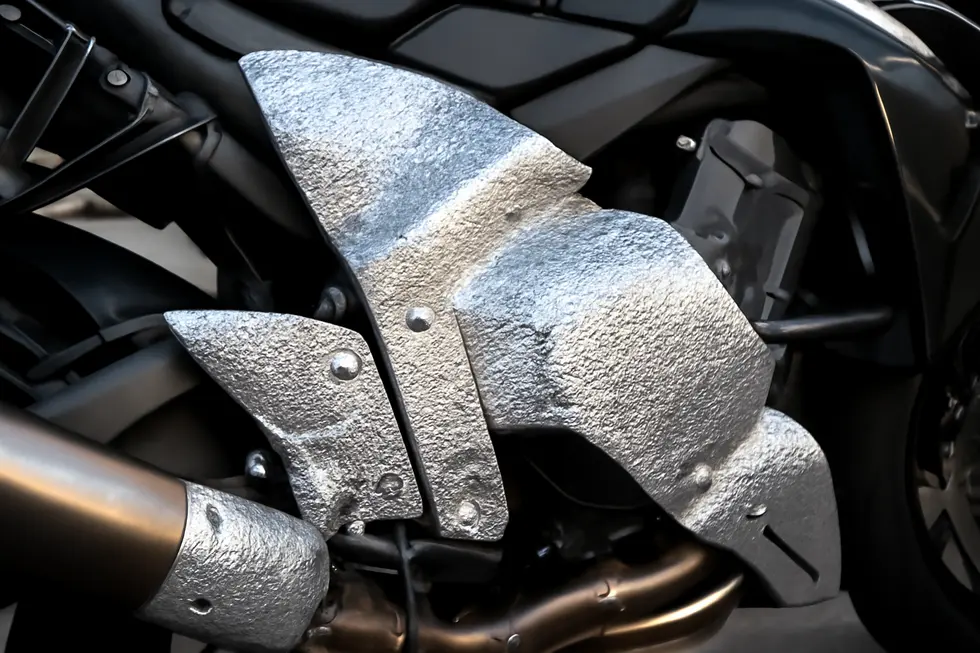
1. The Critical Role of Heat Shields in Safeguarding Motorcycle Fairings from Excessive Heat
Motorcycle fairings serve both aesthetic and aerodynamic purposes, but they also face constant exposure to intense heat generated by the engine and exhaust systems. Without proper insulation, this heat can cause warping, discoloration, or structural weakening of the fairing materials, typically made from plastic, fiberglass, or composite fibers. Heat shields act as essential barriers that protect these vulnerable components by reflecting and dissipating heat away from the fairing surfaces. One of the key features of modern heat shields is the use of foil-coated fiberglass materials. These materials combine the durability and thermal resistance of fiberglass cloth with an aluminized foil surface that reflects radiant heat effectively. Their flexible nature allows the shields to conform to the complex curves of motorcycle body panels, ensuring comprehensive coverage while remaining lightweight. Adhesive-backed heat shields facilitate straightforward installation, providing a strong bond to fairings without the need for mechanical fasteners that could cause damage or add unwanted weight.
The performance of heat shields hinges on their ability to withstand extremely high temperatures close to exhaust pipes and engine components while maintaining structural integrity. Foil-coated fiberglass excels in this regard, offering reliable thermal insulation and flame resistance. Another popular choice for localized heat protection is aluminum heat sheets. Their exceptional thermal conductivity helps disperse heat rapidly, preventing hotspots that could degrade sensitive fairing materials. Additionally, aluminum’s reflective properties send much of the heat radiation away from the surfaces it protects, enhancing the overall insulation effect.
Beyond the raw material properties, the installation process plays a pivotal role in ensuring heat shields function effectively. Specialized adhesives used for bonding heat shields must maintain their strength under thermal cycling and vibration. Epoxy-based adhesives and high-temperature resistant tapes are commonly employed because they adapt to movement and resist moisture penetration without breaking down. This combination of thermal performance and mechanical resilience not only protects the fairings but also safeguards adjacent components from heat-related wear and tear.
The integration of heat shields within the insulation strategy must consider the motorcycle’s design specifics, such as where the engine exhaust routes run and the fairing materials used. Custom-cut or molded shields optimize coverage and prevent unnecessary bulk. This tailored approach ensures the motorcycle retains its sleek appearance while benefiting from enhanced thermal protection. The choice of heat shielding materials and adhesives also contributes to weight management, preserving the bike’s agility and handling characteristics.
Incorporating heat shields significantly extends the lifespan of motorcycle fairings by mitigating potential thermal damage that can lead to cracks, fading, or deformation. Riders gain peace of mind knowing their motorcycle’s bodywork remains robust despite prolonged exposure to harsh conditions. For enthusiasts aiming to maintain or upgrade their motorcycles, understanding heat shield technology provides a critical step toward enhancing durability and ride quality.
For more insights on enhancing motorcycle bodywork, explore comprehensive resources that cover quality materials and installation techniques to ensure optimal performance and longevity.
2. Engineering Motorcycle Fairings with Advanced High-Temperature Materials for Superior Thermal Defense
Managing the intense heat generated by a motorcycle’s engine and exhaust system requires a thoughtful selection of materials designed to withstand high temperatures without compromising the fairing’s form or function. Advanced high-temperature resistant materials play a pivotal role in this process, delivering both protection and durability. These materials ensure that the fairings preserve their structural integrity and aesthetic appeal, even in harsh thermal environments, ultimately enhancing rider comfort and safety.
One of the fundamental components in thermal defense is the use of specialized heat shields crafted from aluminized, foil-coated fiberglass cloth. These shields are engineered to be thin yet durable, designed to adhere directly to plastic or fiberglass fairings. The reflective surface of this materials deflects radiant heat away from vulnerable panels, drastically reducing the risk of heat-related warping or discoloration. The adhesive backing ensures a secure bond that endures thermal cycling and environmental exposure without peeling or losing effectiveness. Their ability to reflect and dissipate heat mitigates stresses on the fairings caused by persistent proximity to exhaust pipes and engine components.
Complementing heat shields, high-temperature resistant plastics such as ABS (Acrylonitrile Butadiene Styrene) and specialty polymers like PEEK (Polyether ether ketone) provide a robust backbone for fairing construction. ABS is renowned for its excellent impact resistance, thermal stability, and UV resistance, making it a practical choice for many production motorcycles. Meanwhile, PEEK and high-temp nylon elevate performance standards through superior heat endurance and dimensional stability, even under prolonged heat exposure. These polymers not only resist melting or deformation but also maintain their strength and rigidity, ensuring the fairing sustains its protective shape and aerodynamic properties over time.
For high-performance motorcycles, carbon fiber composites represent the pinnacle of thermal and mechanical resilience. Carbon fiber offers an exceptional strength-to-weight ratio combined with significant heat tolerance. The manufacturing process often includes autoclaving, which fuses the fibers and resin under heat and pressure, creating a composite that endures intense vibrations, mechanical stresses, and elevated temperatures. This makes carbon fiber ideal for premium fairings where performance and thermal protection are paramount. Beyond strength, carbon fiber exhibits inherent thermal stability that helps regulate heat transfer, protecting both the rider and the bike’s sensitive electronics or aesthetics.
Equally vital to the effectiveness of these materials is the role of high-temperature resistant adhesives. The adhesives bonding heat shields and composite or plastic components must endure ongoing thermal expansion and contraction without losing adhesion. Epoxies and specialized bonding agents used are formulated to resist UV degradation, moisture infiltration, and chemical exposure. Their resilience preserves the structural cohesion of the fairings against environmental challenges, securing the heat shields in place and maintaining the overall integrity of the thermal insulation system.
The synergy of these engineered materials results in a multi-layered thermal protection strategy. Reflective heat shields deflect radiant heat, high-temperature plastics provide a stable structural foundation, carbon fiber adds strength and heat tolerance for premium applications, and resilient adhesives ensure all components work seamlessly as an integrated system. This comprehensive approach not only safeguards the fairings against the damaging effects of heat but also reduces maintenance needs and preserves visual quality over the motorcycle’s lifespan.
By leveraging the distinct advantages of foil-coated fiberglass, high-temp polymers, carbon fiber composites, and advanced adhesives, motorcycle fairings can withstand the demanding thermal environment inherent to modern engines and exhaust layouts. This innovation in materials engineering underscores the critical importance of high-temperature resistant materials in fairing insulation — a cornerstone for durability and enhanced rider experience.
For those interested in exploring a diverse range of practical and high-performance fairing options leveraging these advanced materials, the explore the best motorcycle fairings at Summit Fairings offers valuable insights into how material choices affect both protection and style.
Chapter 2: Materials and Technologies for Effective Motorcycle Fairing Insulation
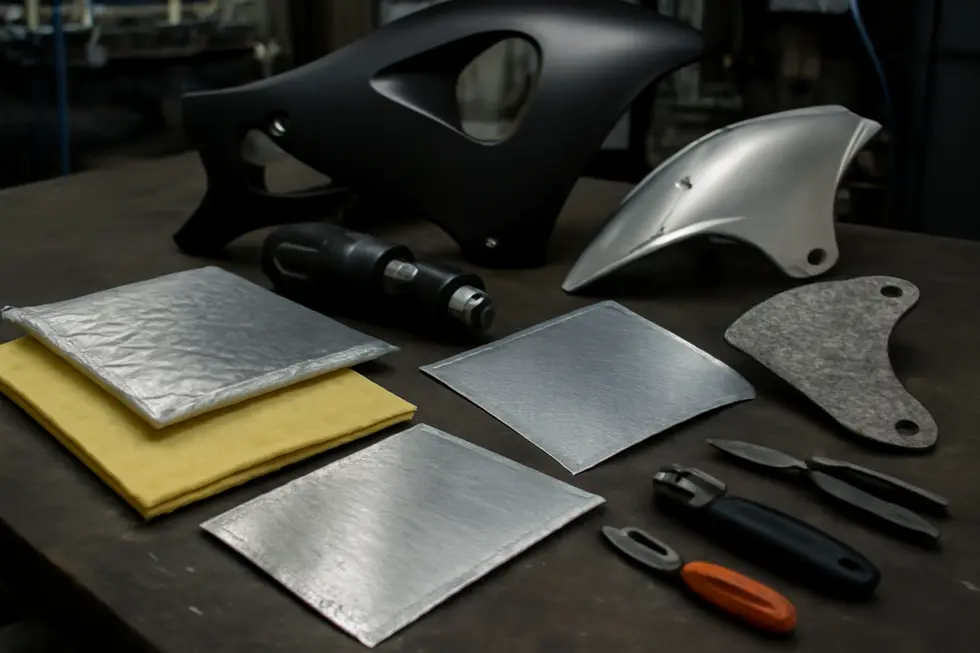
1. Balancing Flexibility and Durability: Foil-Coated Fiberglass and Metal Heat Shields as Thermal Barriers
Motorcycle fairings face constant challenges from the intense heat generated by engines and exhaust systems. This heat can compromise the structural integrity and appearance of fairings while affecting rider comfort and safety. To combat these issues, thermal barrier materials such as foil-coated fiberglass and metal heat shields have become indispensable in modern insulation strategies. Both materials offer unique advantages that cater to different operational demands and design constraints, thus forming the backbone of effective thermal protection in motorcycle fairings.
Foil-coated fiberglass stands out for its lightweight, flexible nature, expertly combining fiberglass’s insulation capabilities with the reflective properties of aluminum foil. This composite generally comes as adhesive-backed sheets or strips, making it simple to apply on interior fairing surfaces that require moderate thermal protection. The aluminum foil layer excels at reflecting radiant heat away from sensitive plastic or fiberglass body panels, while the fiberglass component traps air pockets that substantially slow down conductive heat transfer. This dual-action mechanism makes foil-coated fiberglass particularly well-suited for installations around areas where heat is prominent but not extreme, such as near exhaust headers or under seat compartments. Its pliability allows it to conform to curves and irregular shapes without cracking or detaching, promoting both durability and ease of installation in tight or complex spaces.
Conversely, metal heat shields provide a more robust solution in applications exposed to higher temperatures or mechanical stress. Aluminum and steel are the two predominant metals used, each bringing their own distinct properties to fairing insulation. Aluminum heat shields are favored for their light weight, corrosion resistance, and highly reflective polished surfaces, effectively deflecting heat from engine casings and moderate-temperature exhaust zones. However, aluminum’s melting point around 660°C requires careful placement to avoid direct contact with extremely hot components. Steel heat shields address this limitation by offering superior temperature resistance, capable of withstanding temperatures that aluminum cannot tolerate. Although heavier, steel shields are often chosen for high-heat zones such as exhaust pipes subjected to prolonged thermal loads. Both metal types may be embossed or custom-shaped to fit specific motorcycle geometries, ensuring a balance between protection and aesthetics.
When comparing these thermal barrier options, foil-coated fiberglass excels in applications that prioritize minimal added weight and flexibility to conform seamlessly around intricate fairing contours. Its adhesive-backed design simplifies installation without extra hardware. Metal shields, while less adaptable to complex shapes, bring unmatched durability and resistance to mechanical damage and extreme heat. Nonetheless, their installation may necessitate brackets or clips, adding complexity and slight weight penalties. The reflective properties of both foil-coated fiberglass and metal shields remain excellent, making either choice effective at reducing radiant heat exposure.
In more demanding scenarios, such as racing or high-performance motorcycles, insulation strategies sometimes extend beyond these standard materials. Advanced composites featuring multilayer reflective coatings or heat-resistant fibers offer heightened thermal resistance and moisture protection. These solutions, while highly effective, often come with increased costs and specialized installation requirements, limiting their use to niche applications. Nonetheless, the core principles seen in foil-coated fiberglass and metal heat shields—reflectivity, thermal resistance, and fitment adaptability—continue to inform developments in these advanced materials.
Selecting an ideal thermal barrier requires consideration of several factors, including the expected temperature range, mechanical stress, component shape, and weight constraints. For most street motorcycles, foil-coated fiberglass provides the best compromise of performance, convenience, and cost-effectiveness. Where exposure to extreme heat is prolonged or mechanical robustness is paramount, metal heat shields become the preferred choice. Both materials play a vital role in preserving the longevity, safety, and visual appeal of motorcycle fairings. For riders and designers seeking further insights on fairing materials and insulation strategies, exploring comprehensive resources such as those available at Summit Fairings’ blog offers a valuable knowledge base.
This integration of flexibility, durability, and innovative design in foil-coated fiberglass and metal heat shields demonstrates the critical role of carefully selected thermal barrier materials in effective motorcycle fairing insulation.
2. Advanced Adhesives and Fabric Innovations: Ensuring Durable and Compatible Insulation for Motorcycle Fairings
Advanced Adhesives and Fabric Innovations: Ensuring Durable and Compatible Insulation for Motorcycle Fairings
Achieving effective motorcycle fairing insulation hinges not only on thermal barriers but also significantly on the materials that bond and cushion these elements under rigorous riding conditions. Central to this is the role of advanced adhesives—engineered to deliver exceptional bond strength while maintaining the flexibility necessary to endure constant vibration, impact, and environmental stressors. Adhesives used on motorcycle fairings must withstand intense ultraviolet exposure, moisture, fluctuating temperatures, and chemical contact from fuels and cleaning agents without losing integrity. These demands have driven innovation toward polymer-based adhesives infused with nanotechnology enhancements, enabling secure adhesion to diverse substrates such as ABS plastic, fiberglass, and carbon fiber composites common in motorcycle fairings.
The elasticity of modern adhesives is critical. Mechanical stress and subtle surface movements tend to induce brittleness and eventual failure in conventional adhesives. New formulations inspired by vinyl wraps and protective films allow adhesives not only to conform flawlessly to complex curves but also to remain repositionable during application. This flexibility reduces installation errors and ensures a seamless, scratch-resistant bond that adapts dynamically to the fairing’s underlying movements. As a result, repairs and insulation enhancements become significantly more durable, providing years of reliable performance despite the harsh conditions typical of road use and weather exposure.
Equally important to insulation longevity is the integration of fabric technologies, which protect both fairings and associated rider gear. Fabrics designed for motorcycle applications blend robust abrasion resistance and tear strength with mobility and comfort. Materials are carefully selected and rated by denier—common fabric weights such as 600D, 1000D, and up to 1680D denier provide graduated protection levels with the higher denier fabrics strategically placed at high-impact zones like shoulders and elbows. Seam construction adheres to international standards ensuring that stitching patterns maintain structural integrity even if external threads begin to wear or break. This approach enhances both the safety and durability of protective gear fabrics.
Advanced fiber blends, such as cutting-edge formulations balancing tear resistance with flexibility, further elevate protective performance. These blends, combined with waterproof and breathable membranes, equip motorcycle gear with essential comfort and weatherproofing features without compromising protective qualities. Reflective materials also contribute to rider visibility under low-light conditions, indirectly supporting fairing protection by promoting safer riding.
In the context of insulation, fabrics with adhesive backing such as foil-coated fiberglass cloths provide an indispensable layer against thermal damage. These aluminum-aluminized materials offer a lightweight yet robust shield, preventing engine and exhaust heat from compromising fairing integrity or aesthetics. Their flexibility allows conforming directly to curved plastic and fiberglass panels while maintaining adhesion via advanced bonding agents.
Together, these adhesive and fabric technologies create a symbiotic system that preserves motorcycle fairing performance. The durability of adhesives ensures that lightweight thermal shields and protective fabric layers remain reliably affixed despite mechanical vibrations and environmental challenges. Meanwhile, fabrics enhance protection by combining resistance to physical wear with comfort and breathability where applicable. Integrating these materials with intelligent adhesive choices lays the foundation for a comprehensive insulation strategy that extends fairing lifespan and maintains appearance.
Selecting the right adhesive-fabric pairing depends on compatibility with base materials and expected riding conditions. Polymer-based adhesives tailored to bond with composites allow technicians and enthusiasts to apply thermal protection materials confidently without risking delamination or surface damage. Concurrently, employing high-denier, abrasion-resistant fabrics in rider apparel complements fairing protection by reducing the chance of incidental contact damage and improving overall longevity under frequent use.
This interplay between adhesives and fabrics exemplifies the modern approach to motorcycle fairing insulation—leveraging science-driven material advances to withstand the multifaceted stresses motorcyclists encounter. For a deeper exploration of materials tailored for motorcycle fairings, visit Explore the Best Motorcycle Fairings at Summit Fairings, which offers extensive insights into compatible components and solutions.
By harnessing these advanced bonding agents and fabric innovations, riders and technicians ensure that insulation materials not only perform their protective thermal role but also endure mechanically and environmentally. This comprehensive durability is critical to maintaining both the functional and aesthetic quality of motorcycle fairings throughout their operational lifespan.
Chapter 3: Moisture and Vibration Protection Strategies in Motorcycle Fairing Insulation Using Specialized Adhesives
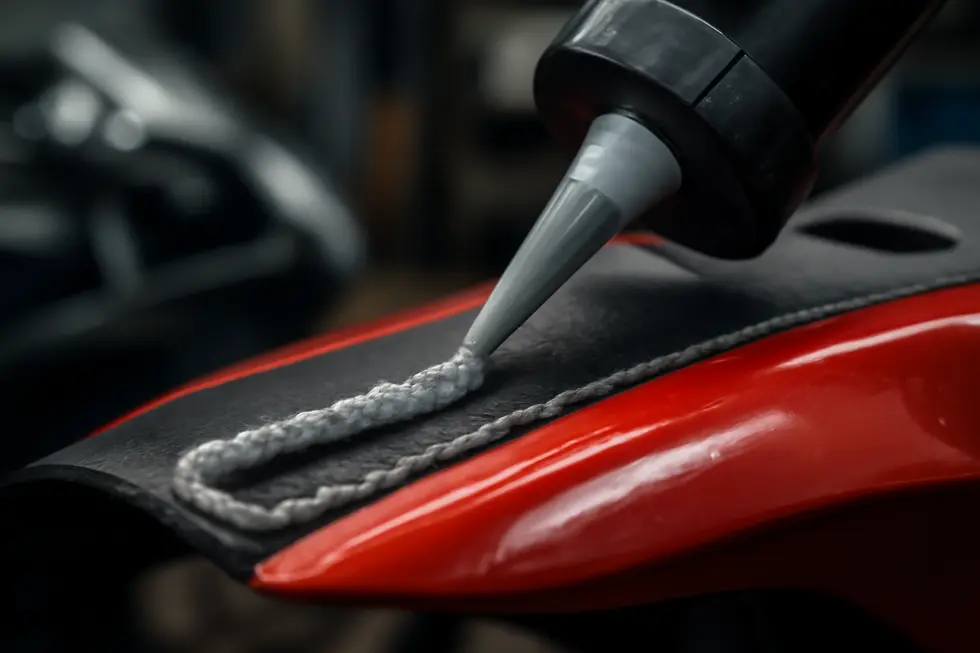
1. Cutting-Edge Adhesive Technologies Enhancing Moisture and Vibration Resistance in Motorcycle Fairing Insulation
The integrity and durability of motorcycle fairings largely depend on effective insulation strategies, where moisture and vibration protection play crucial roles. Recent advancements in specialized adhesives have revolutionized how motorcycle fairings are protected against the relentless challenges posed by environmental exposure and mechanical stress. These innovative adhesives are engineered to create a resilient union between insulation materials and the fairings themselves, ensuring long-lasting performance under varied operating conditions.
Modern specialized adhesives fuse sophisticated polymer chemistry with cutting-edge nanotechnology to deliver exceptional bond strength combined with elasticity. This unique balance allows them to endure mechanical vibrations and shocks without cracking or delaminating, while simultaneously resisting moisture intrusion that can compromise the underlying insulation. The durability of these adhesives means they can withstand prolonged exposure to UV radiation, fluctuating temperatures, and chemical substances such as fuels and cleaning agents, all commonplace in motorcycle use.
One key breakthrough is the development of polymer-based adhesives optimized for adherence to non-porous substrates commonly found in fairing construction, such as ABS plastics, fiberglass, and carbon fiber composites. These adhesives provide a secure, flexible bond that conforms to the complex curves and contours of motorcycle fairings, ensuring consistent contact even during the flexing and vibrations experienced while riding. Their formulation often draws inspiration from vinyl wrap and paint protection film technologies, known for their scratch resistance and ability to conform seamlessly to irregular surfaces.
In addition to permanent bonds, some advanced adhesives feature repositionable properties, allowing precise alignment and adjustment during installation. This capability enhances the quality of adhesion on contoured, intricate surfaces, minimizing the risk of bubbles or gaps that can facilitate moisture ingress or weaken vibration resistance. By promoting flawless installation, these adhesives contribute significantly to the longevity and appearance of the insulated fairings.
Complementing the adhesive technology are vibration-damping materials such as specialized rubber and silicone-based components. These materials serve as buffers, absorbing mechanical shocks and vibrations that can induce fatigue or damage to the fairing and its insulating layers. Their resilience to extreme temperatures and wear enhances their capability to protect critical mounting points and insulation zones prone to mechanical stress. For instance, rubber-based vibration feet not only cushion impacts but also prevent the transmission of harmful vibrations to delicate areas, maintaining both structural integrity and rider comfort.
Together, the synergy of advanced adhesives and vibration-damping materials forms a comprehensive moisture and vibration protection system. This system safeguards motorcycle fairings from environmental moisture, which can accelerate degradation and corrosion, while mitigating the mechanical stresses from engine vibrations and road conditions. The result is a substantial extension in fairing lifespan, improved insulation performance, and preserved aesthetic appeal.
These innovations signify a pivotal shift towards insulation solutions tailored specifically for the dynamic, outdoor motorcycle environment. Employing adhesives with high flexibility, chemical resistance, and environmental durability alongside resilient vibration-dampening materials ensures that the fairing insulation remains intact and effective under demanding conditions.
For those interested in exploring specialized adhesives tailored for motorcycle fairings, resources such as the comprehensive insights found at Summit Fairings’ blog provide valuable technical perspectives on the latest adhesive technologies and material compatibilities. Their expertise highlights the vital relationship between adhesive selection and overall insulation system performance, underscoring the importance of choosing materials designed explicitly for moisture and vibration resilience.
Ultimately, as motorcycle fairing technology advances, integrating these state-of-the-art adhesives and vibration protection components becomes indispensable. They not only defend against moisture damage and mechanical wear but also uphold the functional and visual quality that riders expect, making them foundational to any effective motorcycle fairing insulation strategy.
2. Economic and Societal Benefits of Advanced Moisture and Vibration Protection in Motorcycle Fairing Insulation
The integration of specialized adhesives designed for moisture and vibration protection in motorcycle fairing insulation carries profound economic and societal advantages. These benefits extend beyond simple material performance, influencing maintenance costs, environmental impact, rider safety, and overall community wellbeing.
Economically, utilizing adhesives with robust waterproofing and moisture resistance safeguards the fairings from damage caused by rain, humidity, and routine cleaning. Such protection significantly reduces the need for frequent repairs or replacements, allowing riders and manufacturers to save considerable expenses over time. The financial resilience offered by these adhesives stems from their ability to prevent common forms of degradation that would otherwise compromise fairing durability. Additionally, the flexibility and vibration-absorbing properties of these adhesives play a critical role in maintaining structural integrity despite continuous mechanical stress and temperature variations inherent in motorcycle operation. This enhanced durability translates directly into lower maintenance costs and extended product lifespans, offering financial benefits to consumers and manufacturers alike.
Investing upfront in high-quality insulation materials and adhesives proves especially prudent in regions with variable or harsh weather. By preventing moisture-related damage to sensitive electrical parts and other components housed within or near the fairings, these specialized adhesives prevent costly long-term repairs. This strategic investment hurts short-term budgets less and yields substantial returns by minimizing unexpected repair bills.
From a societal perspective, the improved insulation and protection afforded by advanced adhesives elevate rider safety and comfort. Maintaining aerodynamic properties ensures that motorcycles perform efficiently and predictably, which is crucial for rider control and vehicle stability. Meanwhile, protecting delicate components from environmental hazards contributes to consistent operation and reduces the likelihood of sudden malfunctions. These factors together enhance confidence in the motorcycle as a safe mode of transportation.
Durability gained through moisture and vibration protection also aligns with environmental sustainability goals. By decreasing the rate at which fairings need replacement, these adhesives help reduce waste generation and the consumption of raw materials required for manufacturing replacement parts. This minimizes the motorcycle industry’s ecological footprint, encouraging more responsible resource use and waste management.
Moreover, vibration protection strategies that utilize cushioning adhesives or components reduce mechanical wear and noise emissions. This reduction in noise pollution contributes positively to urban living environments, improving quality of life for communities around busy roadways. The quieter operation of motorcycles equipped with these technologies fosters more harmonious coexistence with pedestrians and residents.
Enhanced reliability can bolster consumer confidence, encouraging wider adoption of motorcycles as practical, efficient transportation alternatives. Greater motorcycle use can mitigate urban traffic congestion and lower greenhouse gas emissions compared to larger passenger vehicles. These shifts can have broad social benefits, including improved air quality and reduced transportation-related stress.
In summary, advanced moisture and vibration protection adhesives in motorcycle fairing insulation provide comprehensive economic benefits by extending product life and reducing maintenance costs. Simultaneously, they promote societal advantages including improved rider safety, environmental responsibility, reduced noise pollution, and support for sustainable urban transportation. Together, these factors underscore the value of investing in high-performance adhesives that secure and preserve motorcycle fairings. For more insights on how to choose quality fairings and components, explore affordable motorcycle fairings at Summit Fairings.
Final thoughts
Ensuring the long-term durability and visual appeal of motorcycle fairings requires a strategic approach to insulation that addresses thermal, moisture, and vibration challenges. By incorporating heat shields made from foil-coated fiberglass and aluminum, businesses can effectively mitigate damaging engine and exhaust heat. Leveraging advanced materials and insulation technologies further bolsters this defense, enhancing performance and resilience. Moreover, applying specialized waterproof and flexible adhesives secures fairings against moisture ingress and mechanical vibrations, preventing premature wear and failure. Understanding and investing in these integrated insulation methods empower businesses to reduce replacement frequency and improve customer satisfaction through superior product quality and longevity. Ultimately, mastering fairing insulation is a critical step toward optimizing motorcycle protection and sustaining business success in a competitive market.
Ready to elevate your ride? Summit Fairings delivers premium, custom-fit fairings that blend style and durability. Whether you’re chasing speed or turning heads, we’ve got your bike covered. Don’t wait—transform your machine today. Click, customize, and ride with confidence. Your perfect fairing is just a few clicks away. Act now!
About us
undefined
RELATED POSTS
View all


